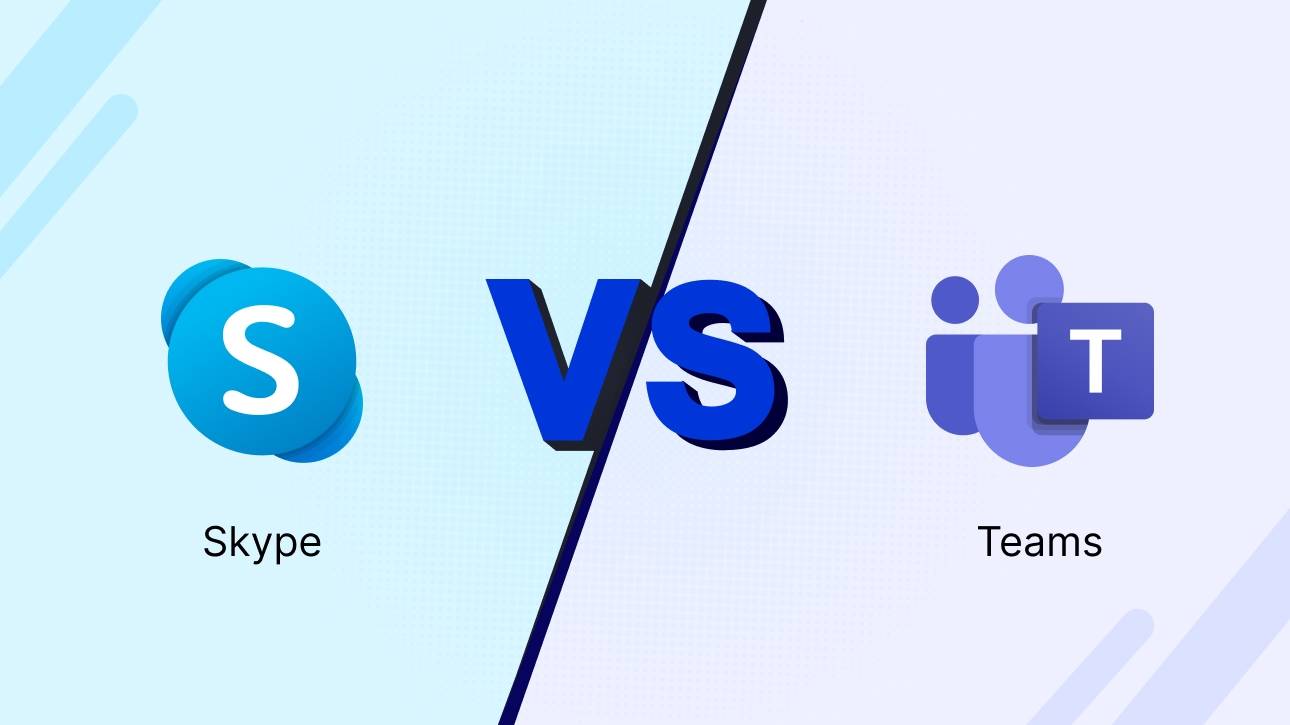Microsoft has officially announced that Skype will shut down on May 5, 2025, marking the end of an era for one of the world’s most recognizable communication platforms. The move is part of Microsoft’s broader strategy to focus on Microsoft Teams. They believe that Teams offers more advanced collaboration and meeting features compared to Skype’s traditional messaging and calling services.
Skype’s shutdown comes as no surprise—its user base has steadily declined while Teams has surged ahead, offering a more integrated, feature-rich experience.
However, the transition isn’t automatic. Skype chat history will not transfer by default to a new program or device unless users move to Teams. Those who want to keep their conversations must manually download their data via the Skype Data Export Page before the shutdown date.
While Microsoft recommends Teams as the natural successor, there are other viable alternatives like WhatsApp, Google Meet, FaceTime, and Zoom. depending on your communication needs. Regardless of the platform you choose, it’s crucial to act before May 5, 2025: if choosing Teams, remember to back up your chat history. Other than that, inform your contacts, and get familiar with the new environment to avoid disruptions.
Let’s understand how Microsoft Teams compares to Skype and the steps you should take right now to ensure a smooth transition.
Skype’s Journey
Skype’s story began with its launch in 2003, changing the way people around the world stayed connected. By offering free voice and video calls over the internet, Skype quickly evolved from a small startup into a global phenomenon. With “I’ll Skype you” becoming a part of our day-to-day vernacular, the platform reshaped the future of online communication.
Let’s trace Skype’s incredible journey, from its modest origins and game-changing innovations to its meteoric rise and gradual fall against rising competition.
Skype’s Birth (2003)
Skype was created by Niklas Zennström from Sweden and Janus Friis from Denmark, with Estonian engineers Ahti Heinla, Priit Kasesalu, and Jaan Tallinn.
Global Launch (August 2003)
Skype made its debut as a peer-to-peer voice-over-IP (VoIP) platform. The goal was to allow users to make free voice calls over the internet — a game-changer at the time.
Rapid Rise (2004–2005)
The platform rapidly attracted millions of users worldwide, expanding its features to include instant messaging and video calling.
Microsoft’s Big Purchase (2011)
Microsoft purchased Skype for $8.5 billion, embedding it deeply across its ecosystem — from Windows to Outlook to Xbox.
Moving to the Cloud (2013–2017)
Skype transitioned from its original peer-to-peer network to a cloud based phone system, improving reliability but facing backlash over design changes.
Losing Ground (2018–Present)
As competition from Zoom, WhatsApp, and Microsoft Teams intensified, Skype’s dominance faded, and Microsoft began shifting its focus to Teams for business communication.
The Final Chapter (2025)
Skype still operates but no longer commands the communication world — with Microsoft clearly backing Teams as its future-facing platform.
Want to take your communication tools further? Discover how customer experience strategies built around Teams or Skype can deepen engagement and loyalty.
Enter Microsoft Teams — More Than Just a Skype Replacement
Microsoft Teams made its official debut on March 14, 2017, born from Microsoft’s ambition to create a collaboration platform that could compete with the likes of Slack. Developed internally by a team led by Brian MacDonald, Teams was built on top of the Office 365 ecosystem, offering seamless integration with Microsoft’s suite of productivity tools.
The Core Promise
Its core promise was clear from the start: bring together chat, meetings, calling, and file collaboration into a single, secure platform.
Feature-Rich Foundation
From its early days, Teams stood out for its rich feature set. It offered private and group messaging with advanced formatting, along with integrated audio and video calling. Real-time document collaboration via OneDrive and SharePoint, and a vast marketplace of third-party app integrations further enhanced its utility.
Key Milestones in Teams’ Growth
- 2017: Official launch and positioned as Skype for Business’s successor
- 2018: Introduction of a free version to attract small businesses and individuals
- 2020: Surge in users during the COVID-19 pandemic; reached 75 million daily active users
- 2021: Hit 250 million monthly active users, integrated with Windows 11, launched Teams Essentials
- 2022: Released Teams Premium with AI-powered features and enhanced security
- 2023: Crossed 300 million users; introduced Copilot and Mesh for 3D meetings
Microsoft’s Vision for the Future of Work
Fast forward to 2025, and Microsoft Teams has solidified its place as the global leader in unified communication and collaboration. It is not only replacing Skype but is now central to Microsoft’s broader vision for the “future of work.”
Skype vs. Teams
Here is a side-by-side comparison of the key features of Skype and Teams to help you get a clearer understanding of each platform:
| Feature | Microsoft Teams | Skype |
| Primary Purpose | Team collaboration and communication | Personal and business communication |
| Chat | 1:1, group chats, threaded conversations | 1:1 and group chats, no threads |
| File Sharing | Integrated with OneDrive, SharePoint, real-time co-authoring | Basic file sharing in chats |
| Third-party App Integrations | Hundreds (Trello, Asana, Salesforce, etc.) | Very limited app integrations |
| Productivity Tools | Built-in task management, Planner, To-Do lists | None |
| Security and Compliance | Enterprise-grade encryption, compliance certifications (HIPAA, GDPR, etc.) | Encryption, fewer compliance standards |
| Storage Capacity | Large storage via SharePoint/OneDrive | Limited file storage per chat |
| User Target | Businesses, enterprises, education, hybrid workforces | Individuals and small businesses |
| Telephony (PSTN calling) | Available (Microsoft Teams Phone) | Skype-to-Phone available (paid feature) |
| AI Features | Smart meeting recaps, real-time transcription, noise suppression | Limited AI (basic noise suppression) |
| Platform Availability | Desktop, web, mobile (integrated into Windows 11) | Desktop, web, mobile |
| Pricing | Freemium; paid plans via Microsoft 365 subscriptions | Mostly free; paid Skype Credit for calls |
What Businesses Should Do Now?
Skype is all set to officially shut down on May 5, 2025. It is important for you to act quickly to avoid communication disruptions. Here are a few steps you can take:
1. Back Up Your Data
Your Skype chat history won’t transfer automatically to another platform. Make sure you manually export and save any important conversations, call logs, and files using the Skype Data Export page. It’s crucial to complete this before the shutdown.
2. Assess Your Communication Needs
Take a moment to review what your team really needs. Are you looking for simple messaging and calling, or a complete collaboration suite with meetings, file sharing, and task management? Understanding your needs will help you choose the right alternative.
3. Consider Moving to Microsoft Teams
If you’re already using Microsoft 365, transitioning to Microsoft Teams makes perfect sense. Teams offers richer collaboration experience, seamless Office integration, enhanced security, and reliable enterprise communication tools, all designed to help your business thrive.
Looking to understand the difference between inbound and outbound call centers? Learn more in our guide.
4. Explore Other Alternatives
If Teams isn’t the right fit for your business, consider platforms that better align with your team’s size, budget, and workflow. Acefone’s unified communication suite integrates seamlessly with Microsoft Teams, WhatsApp, and other popular platforms, letting you centralize all your business interactions in one place.
With features like cloud telephony, smart call routing, IVR, real-time analytics, and CRM integrations, Acefone offers a comprehensive UCaaS solution designed for flexibility, scalability, and enhanced customer engagement.
If you want to learn more about “Call center software features”
5. Prioritize a Fast, Compatible Setup
With Skype’s shutdown just around the corner, time is critical. Choose a platform that’s quick to deploy, compatible with your existing tools, and minimizes data loss.
Set it up immediately, migrate essential data, and run basic tests for calls and meetings. Focus on getting core functions up and running fast to avoid disruption.
6. Inform Your Clients and Partners
If you use Skype externally, make sure to update your clients, vendors, and partners. Share your new contact details, meeting links, and any relevant instructions so they know how to reach you—especially if you’re transitioning to platforms that offer inbound call center services for more structured communication.
For more details, visit us at call center software.
7. Train Your Teams
Don’t assume everyone will pick up the new platform immediately. Offer short training sessions, share quick guides, and help your employees feel confident using the new tools.
Final Word
As Skype’s shutdown date approaches, it is essential to act now to ensure your business communication remains uninterrupted. Backing up data and transitioning to a suitable alternative can help you avoid the disruptions that come with change.
If you choose another Teams alternative, our experts can help you set them up. To ensure a seamless transition, Acefone is here to support you every step of the way, making the switch effortless and efficient.














